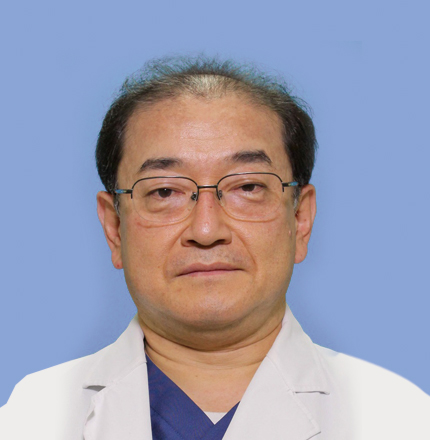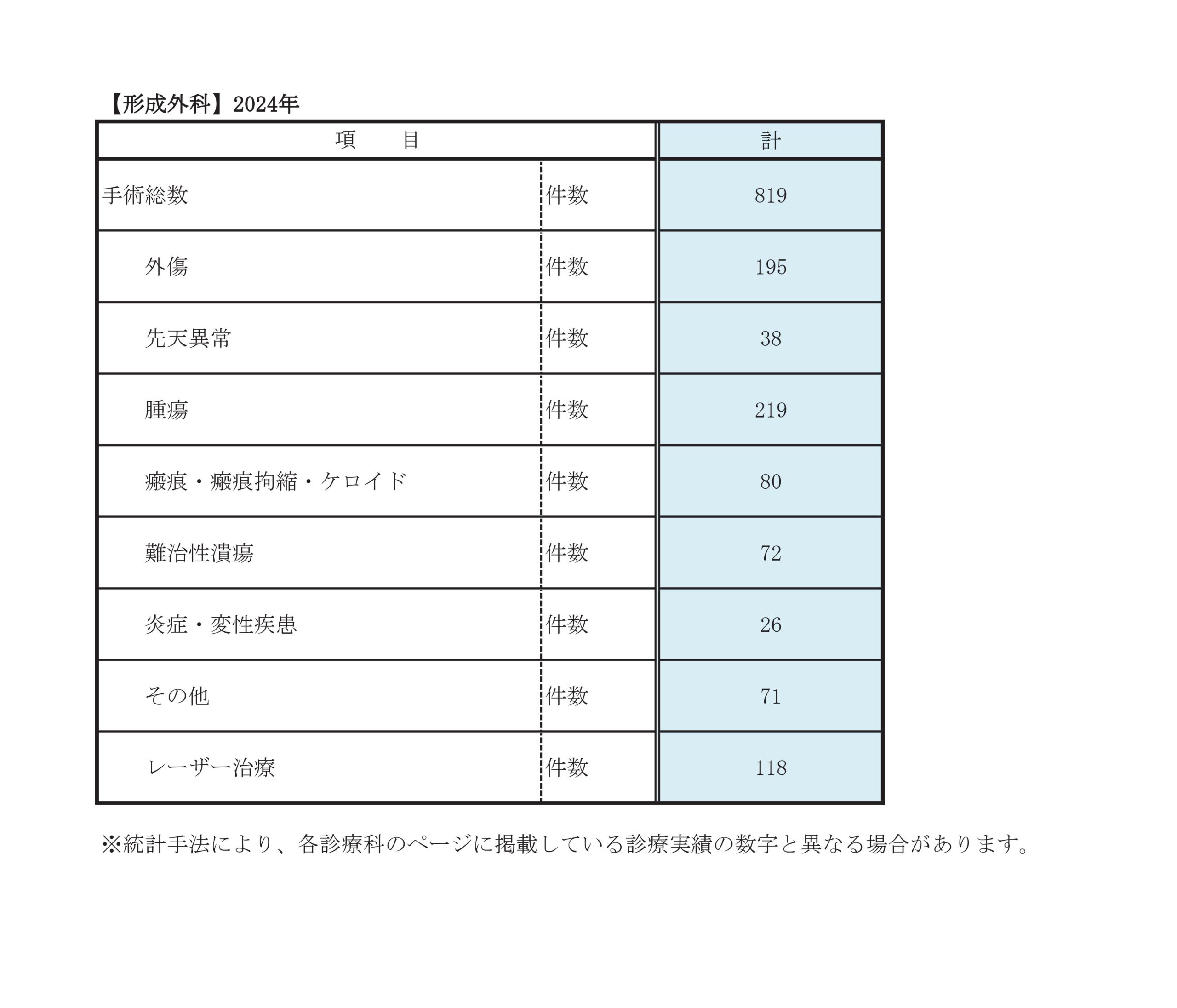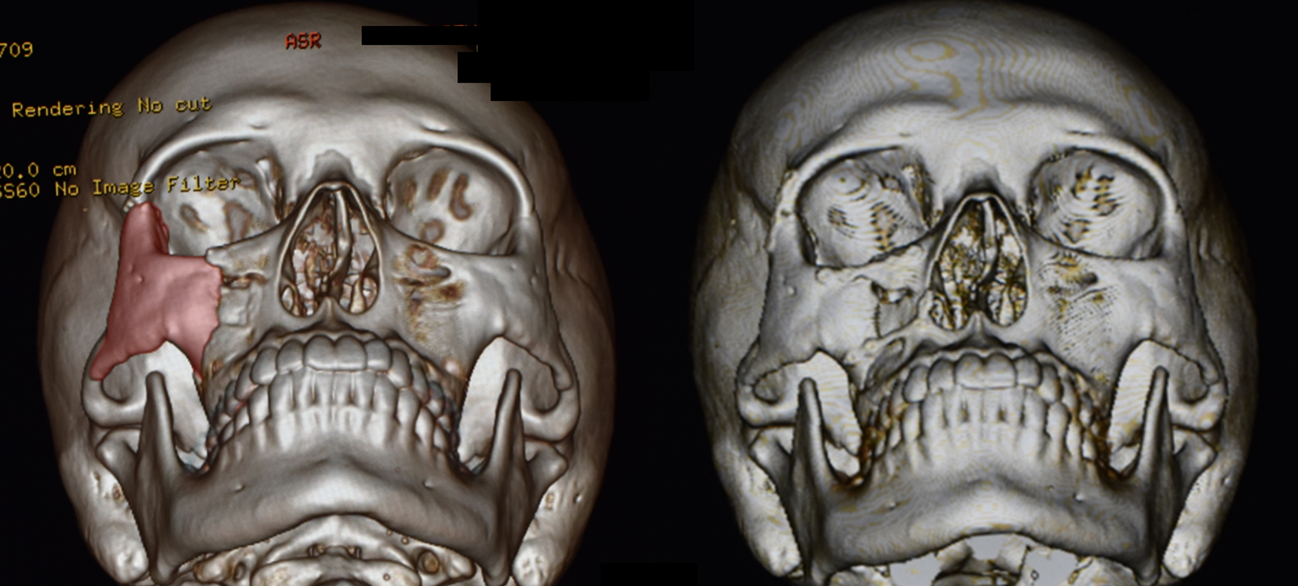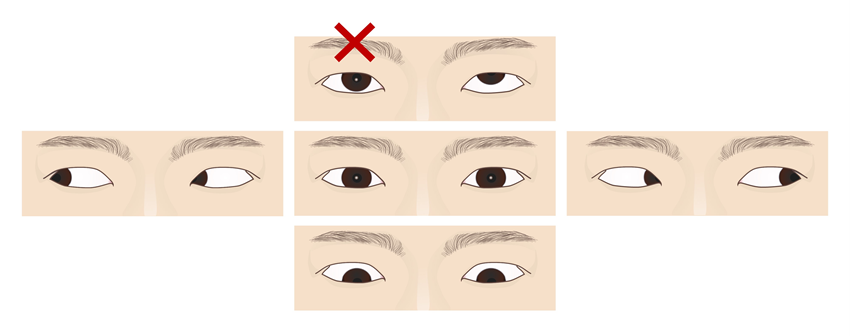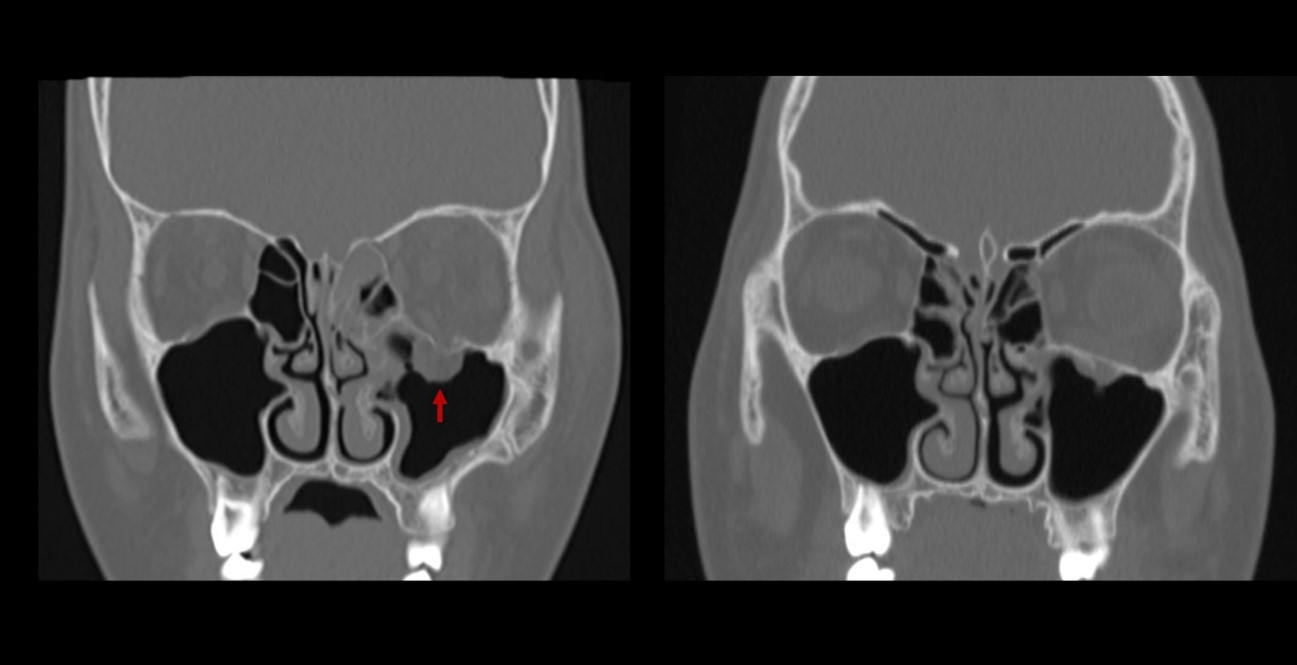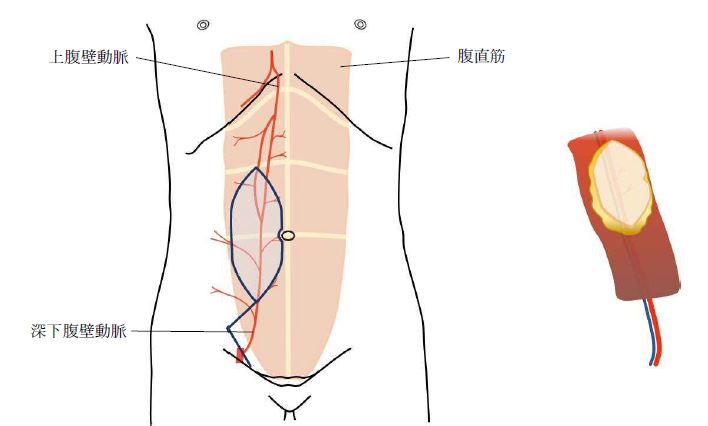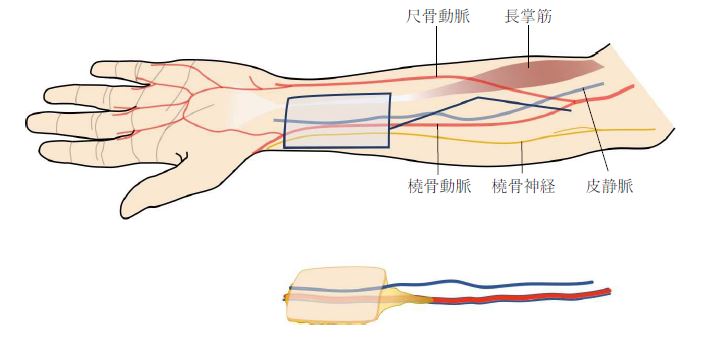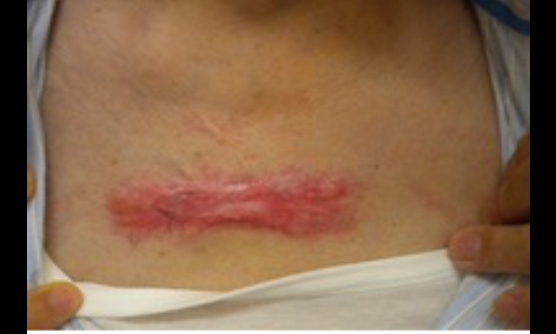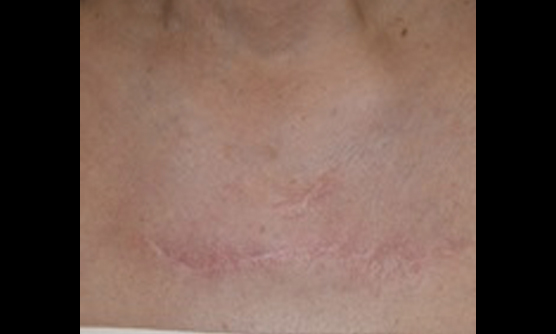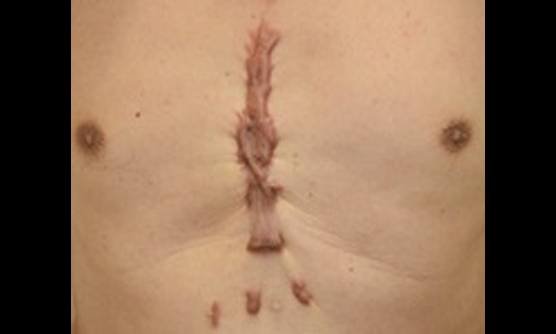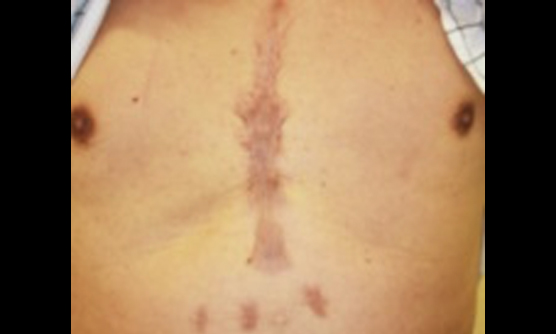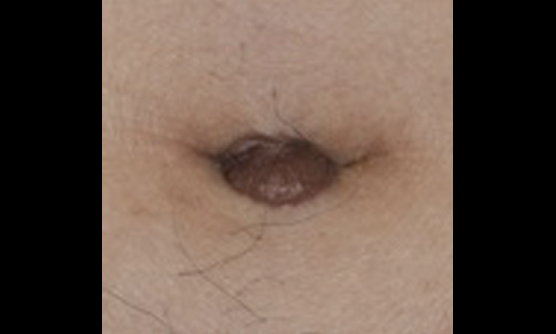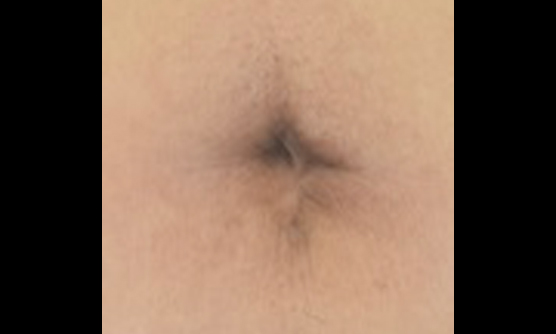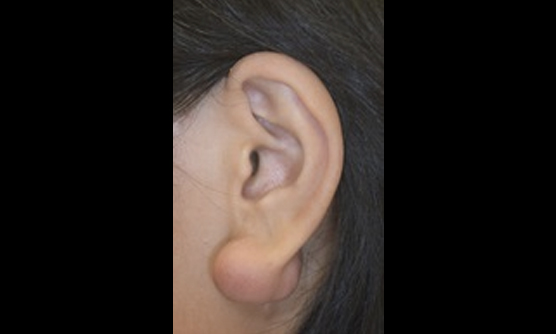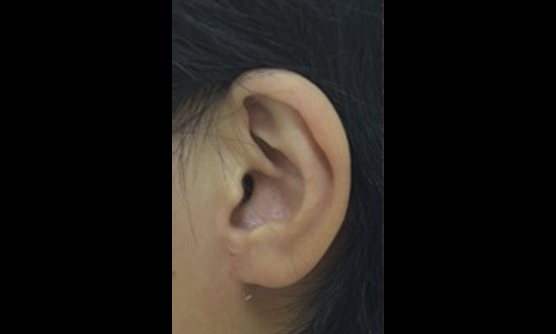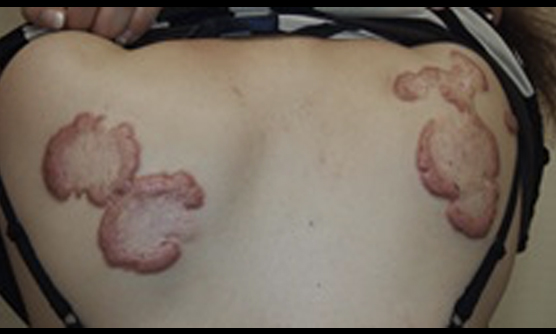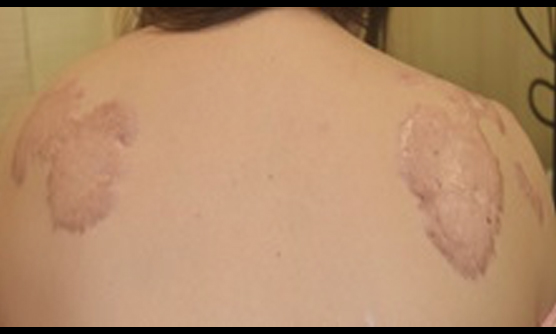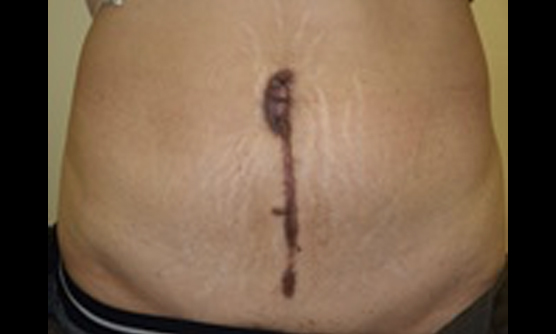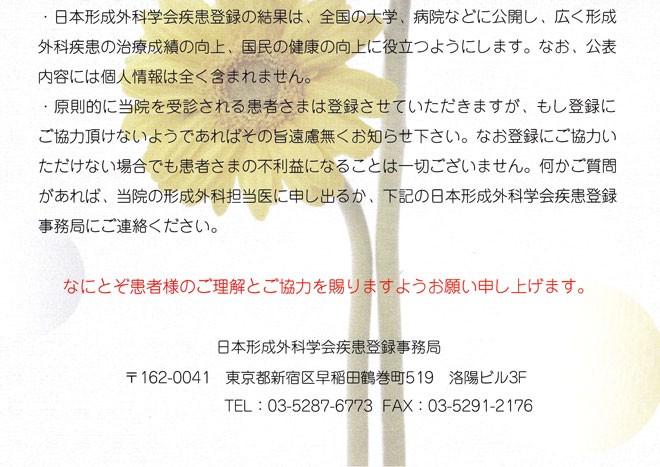形成外科では、外傷、先天異常、外科手術後など、体表面および、その近傍の近い部位の異常、変形を形態的、機能的に修復・再建することを目指しています。体表面、特に顔面の変形、機能異常は、患者さんにとって、生活の質に大きく関与する問題です。経験、医学知識、手術手技、他科との連携を駆使して、治療しています。
外傷
外傷は救急科と連携し、適切な初期治療を行っています。手術治療が必要な場合は、適切な時期に適切な手術を行っています。とくに顔面外傷、顔面骨骨折は、いかにキズを目立たなく、変形、損傷を修復するかに重点を置き、治療しています。熱傷は、救命治療から、変形、醜形、機能再建に至るまで救急救命科、地域医療機関と連携し、治療に当たっています.新鮮外傷だけでなく、陳旧性外傷の修復も積極的に行っています。
先天異常
口唇裂・口蓋裂をはじめとする顔面の先天異常、手指足趾、その他全身の体表先天異常の治療を行っています。特に唇裂口蓋裂は、小児科、耳鼻咽喉科、矯正歯科、口腔外科、聴覚言語療法士、看護師などとチーム医療を推進しています。出生時より治療を開始し、成長の適切な時期に適切な治療を提供するよう努めています。長期間の治療となることも多いですが、患者さん、ご家族と十分に説明、相談しながら、信頼関係を保ちながら治療しています。育成医療も適応出来ます。
腫瘍切除、再建手術
皮膚皮下腫瘍の切除、再建から、他診療科と協力し、悪性腫瘍切除後の再建を行っています。頭頚部外科、乳腺外科、皮膚科を始め、いろいろな診療科と協力関係にあります。悪性腫瘍切除後の再建では、各種皮弁、顕微鏡下遊離皮弁などを用い、患者さんの生活の質を向上するよう努めています。また、乳癌手術後の再建では、シリコンゲルインプラントを用いた乳房再建も保険診療で行っています。
その他
母斑、あざにたいするレーザ治療(保険診療)、眼険下垂、難治性潰瘍、ケロイド治療なども積極的に行っています。その他、一般的に形成外科で保険診療の対象となる疾患は診療しています。
患者さん個々の症状、経過、希望に応じて適切な治療を行っています。
形成外科外来は月・水・金曜日の週に3回開設しています。いずれの曜日も、初診、再診診療を行っています。 また、木曜日午前中は、ケロイド・肥厚性瘢痕専門外来を開設しています。ケロイドの臨床。研究に携わったスタッフが、集学的治療を行っています。
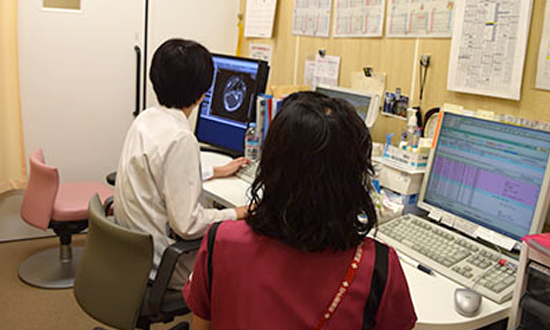
手術は火・木曜日が入院手術(全身麻酔)。月・水・金曜日は外来(日帰り)手術(局所麻酔)を行っています。手術は、術者、介助者など複数名で、万全の体制で行っています。近隣在住で、侵襲の比較的少ない手術であれば、日帰り全身麻酔手術も可能です。
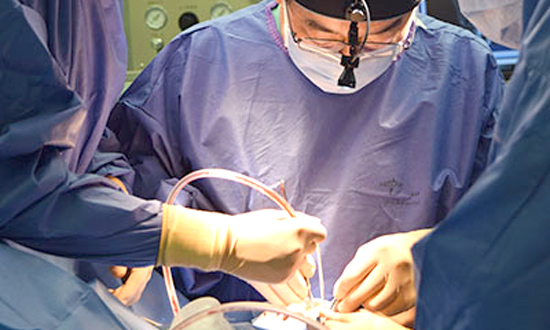
診療実績
主な疾患・治療法
顔面の軟部組織損傷は整容面だけでなく機能面の改善にも留意して治療を行っています。また、顔面骨骨折はできる限り早期に手術を行い、生体内吸収性プレート(骨接合材)で固定を行っています。また、陳旧性の顔面外傷に対する手術も行っています。
顔面骨骨折
当院では交通事故や転落事故、スポーツ等により受傷された顔面骨骨折に対する手術を年間100例程度行っております。受傷後数週間から1ヶ月以内に手術を行うことが推奨されています。手術までに長く時間がかかると、変形したまま骨が固まってしまい種々の症状が残ったままになる可能性がありますので、なるべく早く受診されることをお勧めします。また、手術をしたかどうかにかかわらず、治癒後に残存した変形に対しても治療が可能な場合があります
<頬骨骨折>
口があけにくい、口をあけたときに痛い、噛んだときに痛い、頬や上唇、歯茎が痺れる、頬が平坦になる、などの症状があります。
下眼瞼、眉毛の外側、側頭部、口腔内の4カ所を切開して骨折を整復し、プレートおよびスクリューによる固定を行います(図1)。当院で用いるプレートおよびスクリューは主に体内分解吸収性骨接合材であり、3~5年程度で分解され、基本的に抜去する必要はありません。通常1~2泊程度の入院が必要ですが、術翌日から日常生活程度の活動は可能です。
<上顎骨骨折>
特にLe Fort I型骨折と呼ばれる骨折(図2)では、噛んだ時の痛み、噛み合わせがずれる、などの症状があります。基本的には口腔内を切開して骨折を整復します。この際、噛み合わせせた状態で上下の歯を固定した状態で整復します。この固定は手術中のみ行う場合と、術後も継続する場合があります。
<眼窩骨折>
野球のボールが目にあたった、ボクシングの試合で目を殴られた、などの状況で受傷することが多い骨折です。眼球の動きが障害されたり(眼球運動障害、図3)、眼球が奥に落ち込んだりする(眼球陥凹)ことにより、ものが二重にみえる(複視)ことがあります。特に若年者は眼球を動かす筋肉が骨折部位に挟まった状態になることもあり、その場合は緊急手術となる場合があります。嘔気・嘔吐、目を動かしたときの強い痛み、心拍数の低下(徐脈)などの症状がある場合は、筋肉が挟まっている可能性が高いため、緊急でのご受診が必要です。
下眼瞼を切開して骨折を整復し、先述のプレートと同様の素材でできた吸収性のシートを留置します(図4)。こちらも通常1~2泊程度の入院が必要ですが、術翌日から激しい運動を除く日常生活は可能です。
<鼻骨骨折>
鼻の変形、鼻血、鼻詰まりなどの症状があります。基本的には整容面の改善を目的とします。鼻の中に専用の器具を差し込んで整復を行い(徒手整復)、整復後に鼻の中にガーゼを詰め、外(鼻背)にシーネをあてることで固定します。通常ガーゼは1週間程度、シーネは2週間程度の装着が必要です。整復には強い痛みを伴い、また十分な整復を行うため、当院では全例全身麻酔で整復を行っています。通常1泊入院が必要ですが、日帰りで手術を行うことも可能です。
なお、受傷後時間がたち変形したまま治癒した後の手術は、異なった方法となり、負担が大きくなるため、変形治癒する前(数週間以内)の治療をお勧めしております。
当院救急外来を受診された場合は、受傷翌日に当科を受診いただき、手術日を決定します。他院で診断された患者様も、できるだけ早く受診いただき、早期に手術を行うと良好な結果が得やすくなります。
<顔面多発骨折>
病態は様々です。手術後も変形が残存している、もしくはそもそも手術ができず一旦変形治癒したような症例に関しては、症状にあわせた治療をおこないます。
<その他の顔面軟部組織損傷>
顔の大きな怪我については、形成外科で縫合その他の処置を行います。また、顔の形・動きに影響を及ぼすような傷跡についても、当科で治療を行っております。
全身管理の必要な広範囲熱傷から、小範囲の熱傷まで治療を行っています。広範囲熱傷は救急科と共同で治療します。熱傷治癒後の瘢痕拘縮、醜形などの治療も行っています。
唇裂・口蓋裂治療は、院内・院外の諸施設とチーム医療を行っています。出生時より、成人になるまで、数回の手術を適切な時期に、最高の技術を持って、行っています。また言語治療、連携病院での歯列矯正、歯科口腔外科での顔面骨矯正も可能です。
口唇形成手術
生後3ヶ月程度、体重5-6kgで行います。
唇裂には片側裂、両側裂、完全裂、不全裂と種々有り、その形態も患者さんにより様々です。患者さんの唇裂の程度、状態に応じて細かく対応した手術を行うことが肝要となります。
手術法は、施設・手術者によって少しずつ異なっているのが現状です。当院では、患者さんの唇裂の状態に合わせて、最適な方法を考えて行っています。
当院では初回口唇裂手術では、外鼻形成術は行っていません。これは、手術侵襲により、患児の外鼻軟骨の成長障害を来すことをさけるためです。外鼻形成はもう少し成長してから行います。
口蓋形成手術
生後1歳半、体重10kgを目安に手術を行います。患者さんが喃語から意味のある言葉をしゃべり始める前に行うことが重要です。正しい構音を獲得するためには口蓋裂を閉鎖しておく必要があります。
患者さんには少しつらい手術になりますが、乗り越えるべき手術です。
言語治療
口蓋裂手術終了後より、年齢に応じて開始します。口蓋裂の手術をしても、咽頭などの筋肉の発達の程度により、正常にしゃべれない患者さんがおられます。そのような患者さんの正常構音獲得のために、専門の言語聴覚士が、言語訓練に当たります。言語訓練を続けても正常に構音出来ない患者さんは、さらなる治療(手術)を検討することが必要になる場合もあります。
歯列矯正
顎裂、口蓋裂があると、どうしても歯列が不正になります。専門の矯正歯科の先生(他院)にお願いして、矯正治療を行います。自立支援医療(育成医療)の適応になります。
また、顎裂への骨移植の準備としても歯列矯正が必要になります。また顎裂骨移植手術後も引き続き歯列矯正治療を行っていきます。
顎裂骨移植手術
口蓋裂の延長で顎堤(歯茎)にも裂がある患者さんがおられます。顎堤に裂があると、歯が欠損したり、まっすぐ生えなかったりします。永久歯に生え替わる頃(7-8才くらい)に、顎裂に骨を移植して閉鎖します。主に腸骨より骨髄を採取し移植します。
口唇修正術・口唇鼻形成術
口唇裂の最終仕上げの手術になります。14-16才以降、顔面の軟骨などが成熟した後に行います。外鼻の変形の修正、口唇の瘢痕(きずあと)の修正など多岐にわたります。患者さんの状態に合わせて、十分に相談の上手術を行います。現在満18才まで自立支援医療が使えますので、それまでに終了出来るよう配慮します。もちろん成人の症例も、健康保険で治療を行っています。また、上顎、下顎の骨変形に対する治療(骨切りなど)は、歯科口腔外科にお願いしています。
多指症、合指症(手足)も比較的多い先天異常です。適切南敷に適切な治療(手術)を行っています。多合指(趾)症の場合、通常1才以降に手術を行います。
小耳症、副耳などの耳介変形。先天性眼険下垂などの眼瞼異常。臍へルニア、陥没乳頭などの体幹異常。さまざまな体表異常を扱っています。
頭頚部外科と協力し、頭頚部腫瘍切除後の再建手術を行っています。種々の皮弁を駆使し可能な限り一期再建を行っています。形態的、機能的再建を目指して取り組んでいます。
当院の耳鼻咽喉科・頭頚部外科で行われる、さまざまな頭頚部悪性腫瘍(舌癌・中咽頭癌・頬粘膜癌・上顎癌など)および良性腫瘍の切除術や、外傷などによる大きな組織欠損に対して、体の他の部位からまとまった量の組織を採取し移植する手術です。組織に血管をつけた状態で採取し、頭頚部の血管に繋ぎなおし(血管吻合する)、移植部位で生着させます。これを、「遊離組織移植術」と呼びます。また、頭頚部に近い胸などから組織を切り離さずに移動させることもあり、これを「有茎皮弁術」と呼びます。
頭頚部再建では、飲み込む力の障害(嚥下障害)、発声の明瞭度にかかわる力の障害(構音障害、鼻咽腔閉鎖不全)などの機能障害を最低限に抑えることも目的となります。このためには、欠損部位に対して適切な再建方法を選ぶ必要があります。ここでは、代表的な皮弁をお示しします。
また、手術によって損傷された顔面神経の再建も同時に行ったり、しばらく経ってから再建することもあります。
・腹直筋皮弁(rectus abdominis myocutaneous flap)
特徴:腹直筋に皮膚および脂肪をつけて採取します。分厚い筋肉がついているためボリュームを確保でき、舌の付け根(舌根)や、上顎癌の切除による顔面の大きく深い欠損などに対し使用されます。
閉創:採取した部分は縫い閉じることができます。 術後合併症:腹直筋を採取することで筋力は低下しますが、日常生活には殆ど影響しません。縫い閉じた部分が脆弱になり、「腹壁瘢痕ヘルニア」になる場合があります。予防のため、腹帯を巻くこともあります
・橈側前腕皮弁(lateral forearm flap)
特徴:通常利き腕ではない方の手首付近の皮膚に血管をつけて採取します。薄くてしなやかな皮弁ですので、舌や口蓋、頬の内側などの再建に用いられます。手の血流は主に橈骨動脈と尺骨動脈という2本の動脈により保たれており、そのうちの橈骨動脈を使用します。
閉創:採取した部分は腹部などから採取した皮膚を縫い付ける植皮術を行います。
術後合併症:植皮した部分に色素沈着が生じ、パッチワーク状になり目立ちます。また、橈骨神経の分枝が犠牲になるため、親指の一部が痺れることがあります。
・前外側大腿皮弁(ALT flap: anterolateral thigh flap)
特徴:大腿の前外側の皮膚・皮下脂肪・筋膜に血管をつけて採取します。外側大腿回旋動脈下降枝(およびその伴走静脈)という血管をつけた状態で採取します。比較的大きい皮弁が採取できることが特徴です。
閉創:採取した部分は基本的には縫い閉じることができます。
術後合併症:大腿に線条瘢痕が残ります。筋肉に操作が及ぶため、最初は筋力が低下し、痛みがありますが、最終的には日常生活には殆ど影響しません。
シリコン製のエキスパンダー(水風船)とインプラントを使用した再建とご自身の組織(広背筋や腹直筋)を使用した再建とがあります。乳癌の手術と同時の場合と乳癌の手術が終わってからされる方法とがあります。
治療法は、腫瘍の種類・大きさ・場所・年齢等によって異なります。切除したものは病理検査で診断を行います。全身麻酔の他、日帰り手術やレーザー治療(色素レーザー、Qスイッチ・ルビーレーザー、保険適用のみ)も行っています。
お薬による治療としては、ステロイド含有テープやステロイドの局所注射。手術による治療では、ケロイドのように再発の可能性のあるものには放射線照射の併用を行っています。瘢痕拘縮は、外傷、外科手術後、熱傷後など種々の原因の瘢痕拘縮、肥厚性瘢痕の手術を行っています。
ケロイド・肥厚性瘢痕
ケロイドは、ニキビや虫さされ、ピアスの穴や注射の痕のような微細な傷や、怪我や手術の痕から発生します。
赤く、盛り上がっていることが特徴で、徐々に拡大していき、持続的な痛みや痒みが症状です。ヒトにしか発生しない疾患で、原因としてはっきりしたことは分かっていません。
当院形成外科では、「ケロイド専門外来」を設置し、ケロイド治療を長年行ってきた医師による専門的な診察を行い、治療を行っております。
ステロイドテープの貼り薬や内服薬(トラニラスト)、ステロイドの注射等の他に、手術で切除した後に放射線治療を併用する治療があり、患者さんの状況やご希望に合わせて、治療を行っています。根治させるためには数年単位でかかることもあり、治療に抵抗性のケロイドもありますし、再発することもありますので根気強い治療が必要です。他施設で「治らない」と言われ治療を断念された方も当院に受診されます。あきらめずに受診してください。
当科では理化学研究所と共同でケロイドの根本的な病態や、今後の新しい治療に関わる研究を行っております。(臨床研究を参照)肥厚性瘢痕は、赤く盛り上がりケロイドと症状が良く似ていますが、元の傷を超えて拡大することはありません。熱傷や手術の傷の治りが正常に行われなかった場合に起こるもので、ケロイドとは病態的には異なる疾患です。
治療は外科的治療のみで軽快するものや、外用剤を含む保存的治療を行う場合があります。こちらの治療も行っております。
ケロイド専門外来
木曜日午前(月・水・金の午前も診れます)
前胸部ケロイド
ニキビから発生したものは、赤くて硬い小さな丸いできものが、徐々に大きくなり互いに繋がり、(図1)さらに左右に広がって行きます。ダンベル型の形になることが多いです。
また、開胸手術の術創から発生するものは、徐々に左右上下にひろがり、血抜きのドレーン孔の傷もケロイドとなります。(図2)
図1の症例は切除して放射線照射を施行しました。
図2の症例はステロイドの注射のみで軽快しました。
臍ケロイド
内視鏡手術の手術跡から発生することが多いです。
臍の皮膚は薄いため、縫合時に表皮がまくれこんで、表皮嚢腫(アテローマ)と呼ばれる腫瘍を併発し、感染・炎症を繰り返し、徐々に盛り上がってくることが多いです。
下の症例は切除して放射線照射を施行しました。
耳垂ケロイド
ピアスの穴から発生することが多いです。
穴に一致してしこりができ、徐々に大きくなってきます。他のケロイドと違い、赤みが少ないことが多いです。
下の症例は切除して放射線照射を施行しました。
肩甲部ケロイド
ニキビや虫さされから発生することが多いです。できものを取る小さな手術から起こることもあります。
下の症例は、4年間ステロイド注射を継続し赤みや痒みがほぼ消失しました。
下腹部ケロイド
泌尿器科・婦人科・外科の開腹、帝王切開後の手術痕から発生することが多いです。
下の症例は切除して放射線照射を施行しました。
まぶたが垂れ下がり見えづらくなっている状態を改善するため、垂れ下がった皮膚の切除やまぶたを挙げる筋肉(眼瞼挙筋)の短縮・前転、筋膜によるまぶたの吊り上げなど、原因に応じて様々な方法で手術を行っています。
臨床研究
当科では臨床上の様々な疑問点を解決すべく臨床研究を行っています。観察研究とは直接の同意は頂かずこの啓示を持って同意して頂いたものとして実施されています。また院内の臨床研究倫理委員会にて審査・認可された介入研究や観察研究ではその対象となる患者さん個人に説明し同意を頂いた上で実施しています。
また我々の教室ではこれらで得られた知見を積極的に国内外の学会発表や論文で報告しています。
主な臨床研究(観察、介入研究を含む)
| 研究課題名 | 当院責任者 | 説明文 (PDF) |
|---|---|---|
| ケロイドの診断・治療におけるケロイド発現蛋白の機能と有用性 | 池田実香 |
お知らせ
少人数で運営しておりますので、現在特に専門外来を設置せず、一般外来にて全般的疾患に対応しています。
地域医療の先生方へ
形成外科外来は、月、水、金曜日です。(火・木曜日外来は緊急症例のみ)
| 入院手術 | 火曜日、木曜日 |
|---|---|
| 外来手術 | 月・水・金曜日(予約制です) |
| レーザー治療 | 主に外来手術の枠で行いますが、小児等全身麻酔が必要な場合などは、入院手術でも行っています。 |
| カンファレンス(症例検討会など) | 随時行っております。また頭頸部外科など他科との合同カンファレンスにも積極的に参加しています。 |
| 部長回診 | 毎週木曜日午後 |
地域医療の先生方へ
形成外科外来は、月、水、金曜日です。(火・木曜日外来は緊急症例のみ)
| 入院手術 | 火曜日、木曜日 |
|---|---|
| 外来手術 | 月・水・金曜日(予約制です) |
| レーザー治療 | 主に外来手術の枠で行いますが、小児等全身麻酔が必要な場合などは、入院手術でも行っています。 |
| カンファレンス(症例検討会など) | 随時行っております。また頭頸部外科など他科との合同カンファレンスにも積極的に参加しています。 |
| 部長回診 | 毎週木曜日午後 |
当院は日本形成外科学会疾患登録に参加しています。
人工乳房による再建手術をお考えの方へ
2019年7月、当時日本で唯一保険承認を受けていたアラガン社のエキスパンダーおよびテクスチャード(表面がざらざら)インプラントがBIA-ALCL(ブレストインプラント関連未分化大細胞型リンパ腫)の発生により、全世界的に販売停止・自主回収となりました。豊胸や乳房再建のブレストインプラント患者に発生したBIA-ALCL(ブレストインプラント関連未分化大細胞型リンパ腫)の発生報告は2022年現在733例、死亡例は36例です。BIA-ALCL(ブレストインプラント関連未分化大細胞型リンパ腫)の発生頻度は数千人から数万人に1人と報告され、本邦では2019年と2021年に1例、2022年に2例の合計4例報告があります。
2013年7月より日本での保険承認後、当院でもアラガン社のナトレルインプラントによる乳房再建の手術を行ってきました。当該手術を施行した患者さんには、BIA-ALCLの発生頻度が低率で進行が緩徐であり、早期発見によりインプラントを皮膜ごと切除することで治療することが可能であること、また定期的な診察と画像診断により早期発見が可能であることをご説明させていただき、学会から推奨されている方針に従い半年ごとの診察と2年ごとのMRI画像診断をさせていただいております。また積極的なインプラントの抜去を推奨はしておりません。他院にて乳房インプラントの手術をうけられ、当院で以後の経過観察を受けておられる方も同様の経過観察をさせていただいております。
2022年6月現在使用できるエキスパンダーはナトレル133S(アラガン社)、MOTIVA FLORA(エスタブリッシュメントラブス社→2022年7月頃から入荷予定)、コーケン社(従来からあるエキスパンダー)があります。またインプラントはスムースタイプ(表面ツルツルのお椀型)がinspira(アラガン社)、Sientra(シエントラ社)、MOTIVA(エスタブリッシュメントラブス社→2022年7月頃から入荷予定)があり、マイクロテクスチャ―ドタイプ(表面ザラザラ)はSientra(シエントラ社)があります。
当科では、患者さんにご説明の上、ご希望のエキスパンダー、インプラントを使用して乳房再建をおこなっております。
また、当院ホームページにおいても随時情報を更新させていただく予定です。
2022年6月8日
神戸市立医療センター中央市民病院
形成外科 池田実香
一般社団法人 日本乳房オンコプラスティックサージャリー学会「患者様向け情報」
乳房再建用ティッシュエキスパンダーの手術を受け、ブレスト・インプラント(ゲル充填人工乳房)による乳房再建を待機されている方へ
| 2019年8月2日付 | 乳房再建用ティッシュエキスパンダーの手術を受け、ブレスト・インプラント(ゲル充填人工乳房)による乳房再建を待機されている方へ |
|---|
ブレスト・インプラント(ゲル充填人工乳房)による乳房再建を希望されている方へ
| 2022年2月付 | 乳房インプラント(ゲル充填人工乳房)による乳房手術を希望されている方へ |
|---|
ブレスト・インプラント(ゲル充填人工乳房)による乳房手術を受けた方へ
| 2022年2月付 | 出荷停止となった乳房インプラント(ゲル充填人工乳房)による乳房手術を受けた方へ |
|---|---|
| 2019年8月2日付 | ブレスト・インプラント(ゲル充填人工乳房)による乳房手術を受けた方へ |
ブレスト・インプラント関連未分化大細胞型リンパ腫(BIA-ALCL)についてよくあるご質問
| 2022年2月付 | 乳房インプラント関連未分化大細胞型リンパ腫(BIA-ALCL)についてよくあるご質問 |
|---|---|
| 2019年8月2日付 | ブレスト・インプラント関連未分化大細胞型リンパ腫(BIA-ALCL)についてよくあるご質問 |
